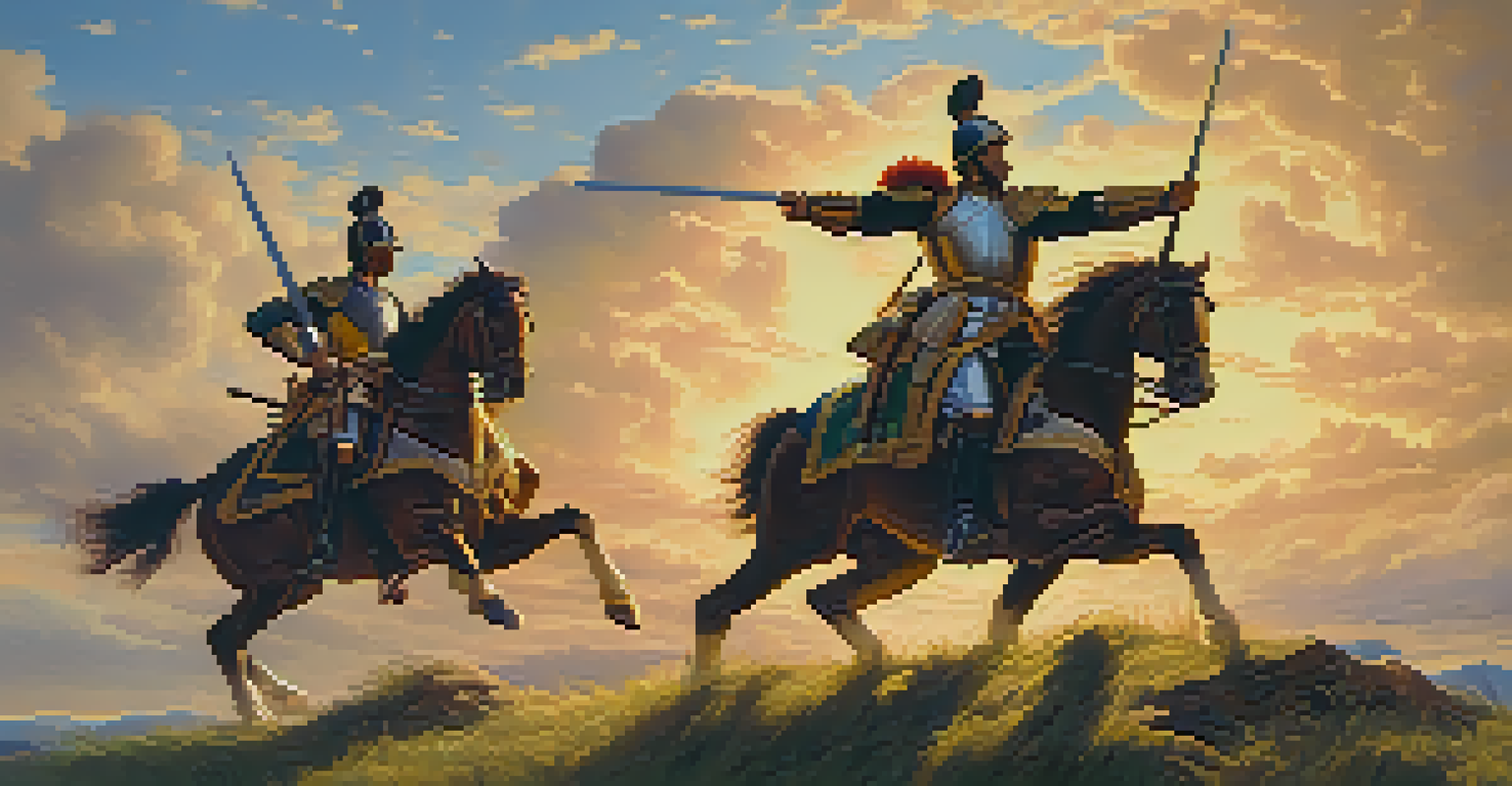The Role of Storytelling in Historical Writing

Understanding Storytelling's Importance in History
Storytelling is more than just a method of entertainment; it's a powerful tool for conveying historical truths. When historians weave narratives, they create a framework that helps people connect with events on a personal level. This connection is crucial because it transforms dry facts into an engaging tale that resonates with readers.
History is not a burden on the memory but an illumination of the soul.
By placing historical figures and events within a narrative context, writers can evoke emotions and foster empathy. For instance, when we read about a battle, understanding the motivations and fears of the individuals involved makes the story relatable. This emotional engagement can inspire readers to reflect on their own lives and the lessons history offers.
Moreover, storytelling aids in memory retention. Studies suggest that people are more likely to remember information presented in a narrative format. This is particularly beneficial in historical writing, where the goal is not just to inform but also to ensure that these lessons are preserved for future generations.
Crafting Compelling Characters in Historical Narratives
One of the cornerstones of effective storytelling is the development of compelling characters. In historical writing, these characters often embody the complexities of their times, providing readers with relatable figures to follow. For example, a well-drawn character can illustrate the struggles of a particular social class or the dilemmas faced by leaders during a crisis.

Historians often draw on primary sources like letters, diaries, and official documents to breathe life into these characters. By presenting their thoughts, emotions, and motivations, the writer allows the audience to see history through their eyes. This approach not only humanizes historical figures but also invites readers to consider their own responses to similar situations.
Storytelling Connects Us to History
Narratives transform historical facts into relatable experiences that evoke emotions and foster empathy.
Ultimately, creating dynamic characters serves to deepen the narrative, making history feel less like a collection of dates and more like a living tapestry. Readers can become invested in these characters' journeys, leading to a more profound understanding of historical events and their implications.
Setting the Scene: The Role of Context in Historical Storytelling
Setting is crucial in storytelling, especially in historical writing, as it provides context for the events being narrated. By painting a vivid picture of the time and place, writers help readers immerse themselves in the era. Describing the sights, sounds, and even smells of a particular period can evoke a stronger sense of presence, making history feel tangible.
Those who cannot remember the past are condemned to repeat it.
Additionally, the context helps readers grasp the significance of events. For instance, understanding the socio-political climate during a revolution allows readers to appreciate the motivations behind the actions taken by historical figures. This layered approach gives depth to the narrative and fosters a more nuanced understanding of history.
Furthermore, including context allows historians to highlight the complexities of historical events. Rather than presenting a linear narrative, they can explore the multiple factors and perspectives that influenced outcomes, encouraging readers to think critically about the past.
Utilizing Conflict as a Driving Force in Historical Narratives
Conflict is a central element in storytelling that propels the narrative forward and engages the audience. In historical writing, conflict can manifest in various forms, such as wars, political struggles, or social movements. By focusing on these conflicts, historians can capture the drama and tension that define significant events.
Moreover, presenting conflict encourages readers to explore the motivations and consequences of various actions. For example, understanding the conflict between differing ideologies during the Cold War can illuminate the broader implications of that era. This exploration fosters a deeper appreciation for the complexities of history and its ongoing relevance.
Characters Bring History to Life
Compelling characters, drawn from primary sources, allow readers to understand historical events through personal perspectives.
Additionally, conflict often leads to character development and transformation. As individuals navigate challenges, they reveal their strengths and weaknesses, providing a rich tapestry of human experience that readers can relate to. This connection to personal struggles within historical contexts makes the narrative more impactful.
The Power of Themes in Historical Storytelling
Themes serve as the backbone of storytelling, providing underlying messages that resonate with readers. In historical writing, themes can encompass broad concepts like freedom, resilience, and justice, allowing the audience to draw parallels between the past and the present. This relevance is key to keeping history alive and engaging.
By exploring these themes, historians can link individual stories to larger historical trends, encouraging readers to think critically about how these issues persist today. For instance, examining the theme of resistance in various movements throughout history can lead to a deeper understanding of contemporary struggles for social justice.
Thematic exploration also invites reflection and discussion. When readers engage with these themes, they are prompted to consider their own values and beliefs, fostering a sense of connection with both the narrative and the broader human experience.
Engaging the Audience Through Relatable Language
A key aspect of effective storytelling is the use of relatable language that resonates with the audience. In historical writing, this means avoiding jargon and opting for clear, accessible language that invites readers in. When the narrative feels approachable, more people are likely to engage with history and its lessons.
Additionally, using anecdotes or personal stories can bridge the gap between the past and present. For instance, sharing a personal account of a historical event can humanize the subject matter and make it more relatable. This approach fosters empathy and encourages readers to connect with the experiences of those who lived through significant moments.
Ethics in Historical Storytelling
Historians have a responsibility to portray history accurately while representing diverse voices to create a fuller understanding of the past.
Ultimately, engaging language helps to demystify history, inviting readers from all backgrounds to explore the past. By breaking down barriers, historians can inspire a broader appreciation for history and its relevance in today's world.
The Ethical Responsibility of Storytellers in History
With the power of storytelling comes the ethical responsibility to portray history accurately and sensitively. Historians must navigate the fine line between crafting compelling narratives and ensuring that they do not distort the truth. This balance is crucial to maintaining the integrity of historical writing.
Moreover, ethical storytelling involves representing diverse perspectives and voices. Acknowledging the experiences of marginalized groups enriches the narrative and broadens the understanding of historical events. This inclusivity is vital for creating a more complete picture of the past.

Lastly, historians should be aware of the impact their narratives can have on contemporary society. By thoughtfully considering the implications of their storytelling, they can contribute to a more informed and empathetic understanding of history, fostering dialogue and reflection among readers.